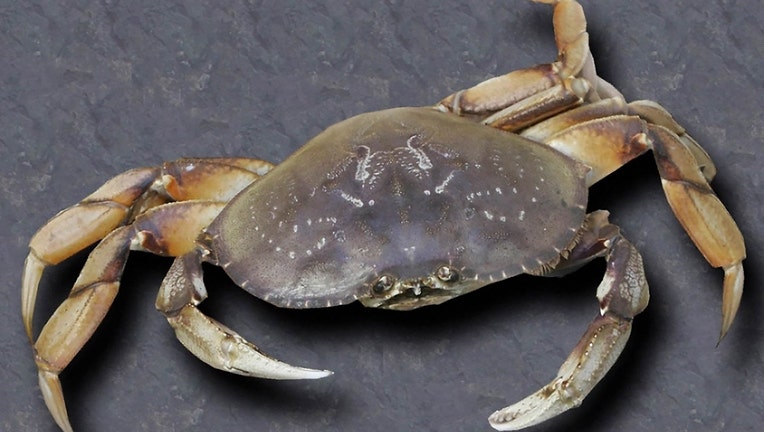Crab season delays implemented to protect humpback whales

A Dungeness crab in an undated California Department of Fish and Wildlife (CDFW) photo. The Dungeness crab inhabits eelgrass beds and water bottoms along the west coast of North America and is a popular seafood. A typically crab grows to about 8 inch
MENDOCINO, Calif. - Recreational Dungeness crab season in Zone 4 -- from Pigeon Point to Lopez Point --is set to open at 9 a.m. Friday, but new restrictions designed to protect migrating humpback whales and other marine life has delayed crabbing in some areas.
The commercial fishery will open in this zone Dec. 16. Commercial fishing activity will be limited to depths of 40 fathoms and shallower, and crafts must have an electronic monitoring system.
The commercial fishery will continue to be delayed in Zone 3, from the Sonoma/Mendocino county line to Pigeon Point, due to high numbers of humpback whales present in the Gulf of the Farallones.
The temporary crab trap restriction for the recreational fishery will remain in place in Zone 3 until marine life safety can be evaluated next week. The recreational use of crab traps is permitted in all other local zones.
"Fishing Zones 1, 2, 5 and 6 are now open, and fresh Dungeness crabs have been arriving at local markets and onto the plates of eager crab-loving Californians," said California Department of Fish and Wildlife Director Charlton Bonham.
Cases of large whale entanglements off the West Coast have increased in recent years, according to the department. Humpback whales foraging near the Farallones Islands are at risk of becoming entangled in crab traps. Once whales have migrated further south to their winter breeding grounds, the commercial season can open, and the temporary recreational trap restriction in Zone 3 can be lifted. The entanglement risk measures are new this season under updates to the Fish and Game Code.
Visit CDFW's Whale Safe Fisheries page and www.wildlife.ca.gov/crab for information about the new recreational crab trap regulations.

